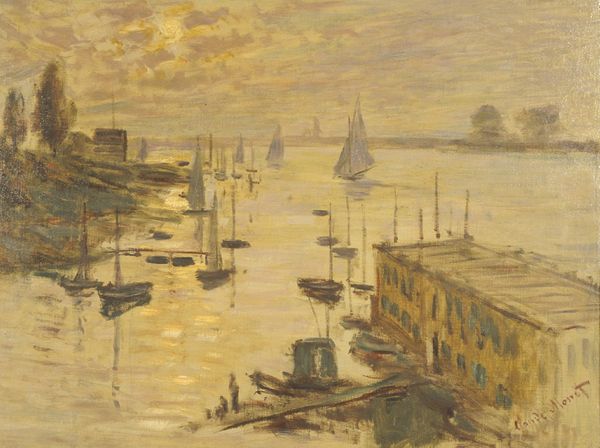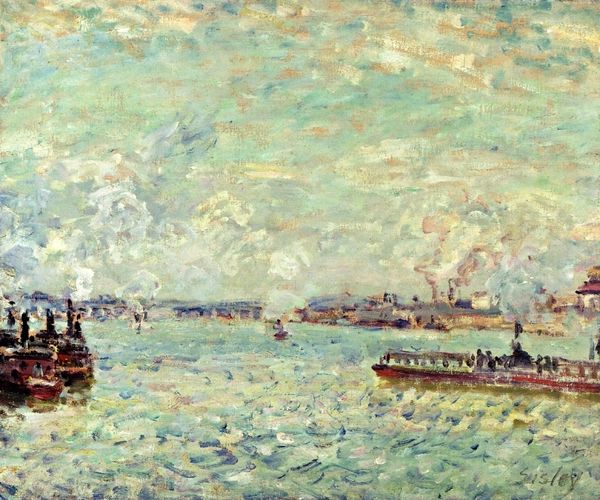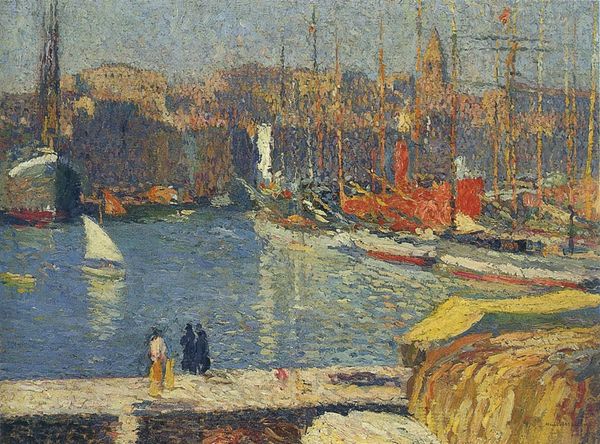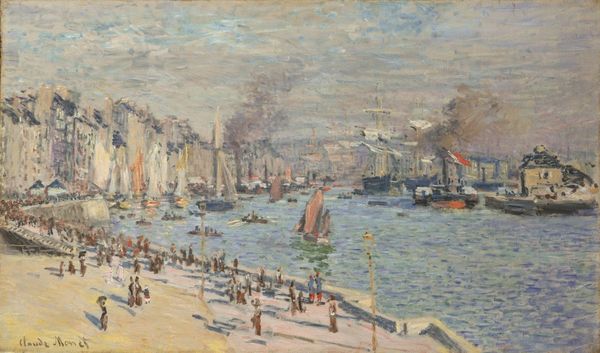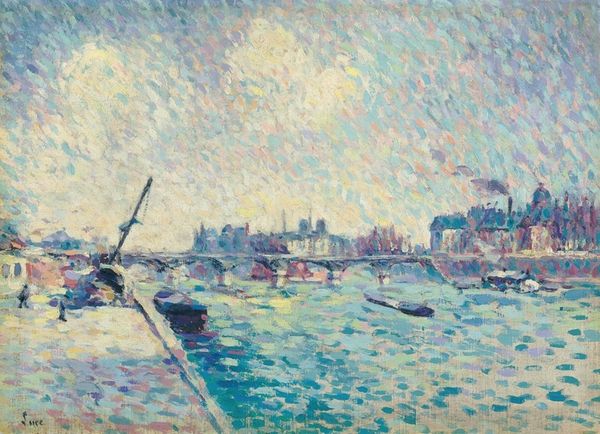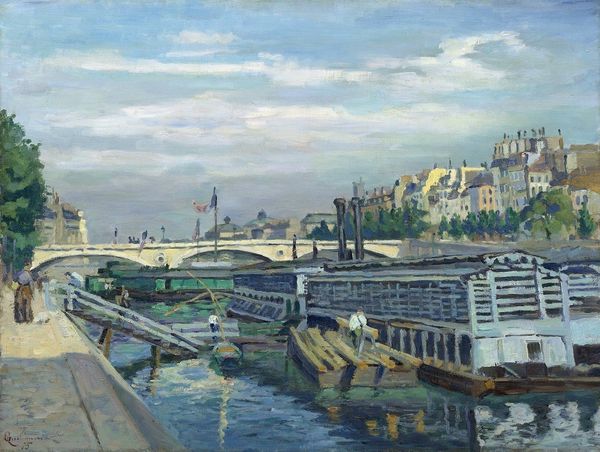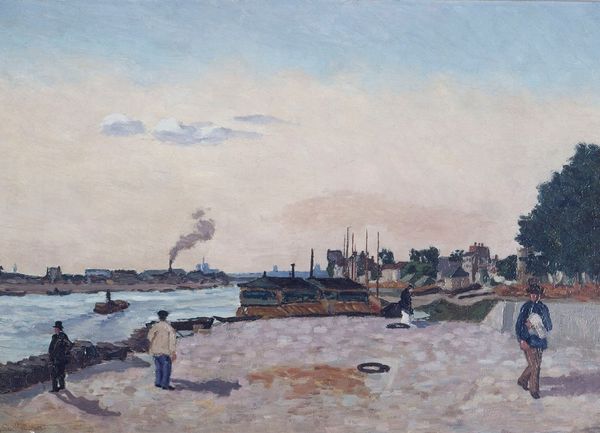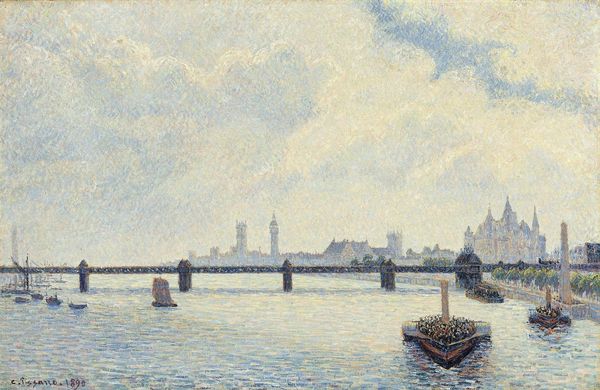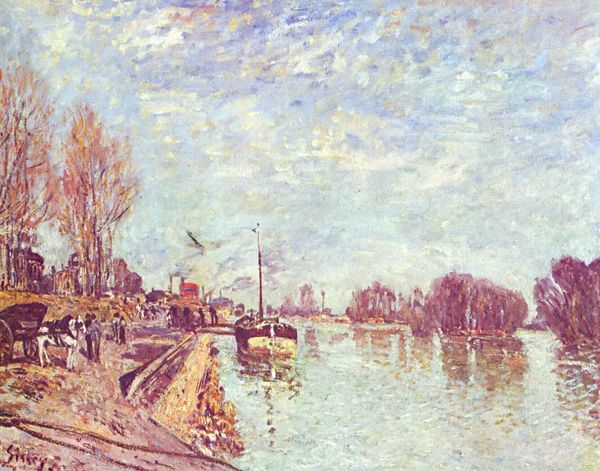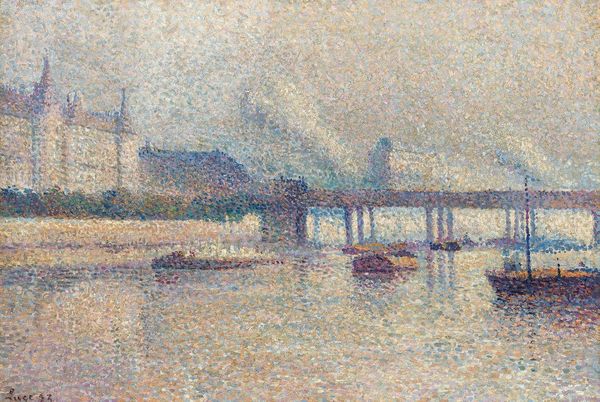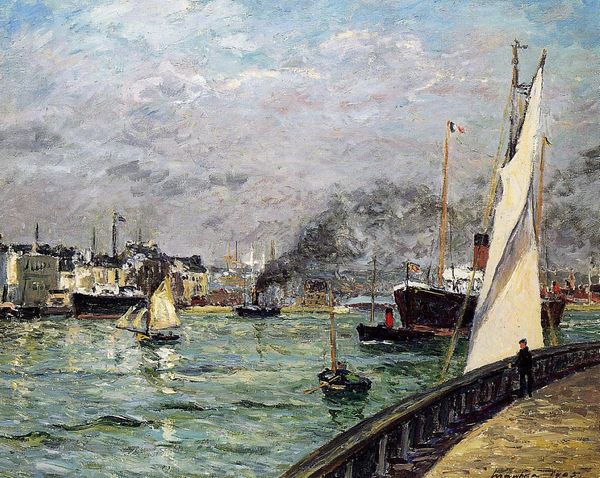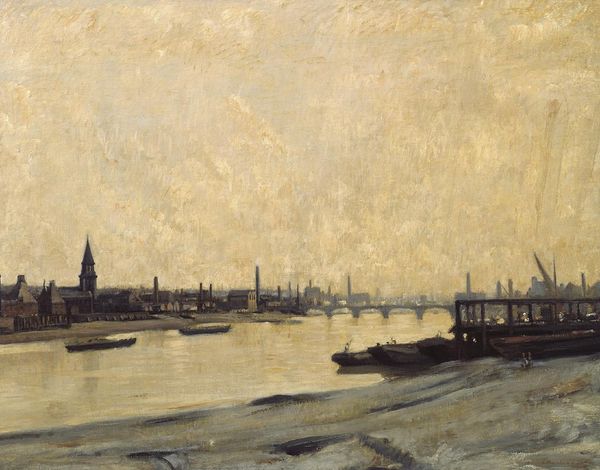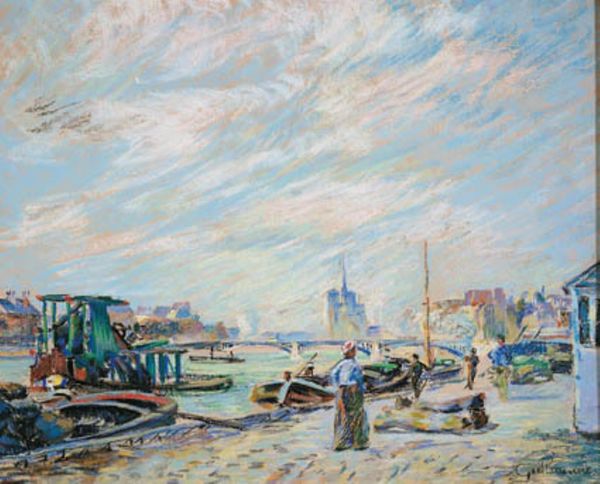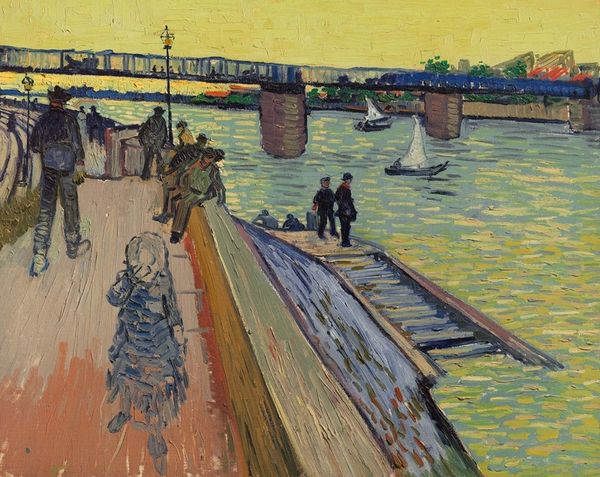
Copyright: Public domain
Editor: We’re looking at "Le Havre," an oil painting by Albert Marquet from 1911. I’m immediately struck by the broad strokes and muted color palette, creating a rather tranquil, almost melancholy mood despite the busy port scene. What do you see in this piece, considering the artist and the time it was created? Curator: I see a negotiation between tradition and modernity, rendered through subtle symbolism. Notice how the water, painted in gentle, almost passive greens and blues, meets the solid, assertive geometry of the docks and buildings. The water, in art, often symbolizes the unconscious, the fluid realm of emotions and intuition. Here, it seems to be giving way to the constructed world. The figures are dwarfed. Does this suggest something about humanity’s place in a rapidly industrializing world? Editor: That’s fascinating! I hadn’t considered the water as a symbolic element. So, you are seeing a tension between the natural and the artificial, almost a commentary on industrial progress? Curator: Precisely. And consider the limited palette, unusual for Fauvism. Marquet appears to be evoking a feeling of quiet resignation, of something being lost in the pursuit of progress. These weren't simply paintings of modern life, they became containers for modern anxieties, visually embedding symbolic language to unpack. The light, while present, doesn’t quite illuminate the scene. It almost casts a shadow of doubt over the port. Do you feel that? Editor: Yes, I think so. I initially interpreted the limited palette as simply an aesthetic choice, but considering the symbolic weight, it adds a whole other layer to it. It gives it more narrative potential. Curator: And narratives, layered with visual memory, connect us to the ongoing story of human experience. Thinking about our relationship to place through images creates empathy and understanding. Editor: I'm walking away seeing more to this work than I expected: not just a cityscape, but an artifact of human impact. Curator: Indeed. The canvas becomes a vessel containing culture’s anxieties, visible for us to explore today.
Comments
No comments
Be the first to comment and join the conversation on the ultimate creative platform.
